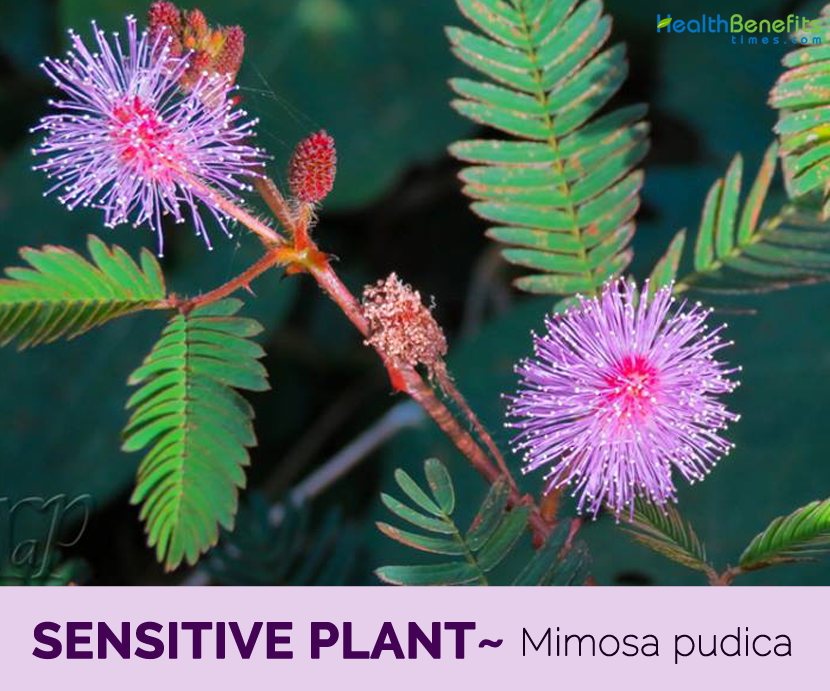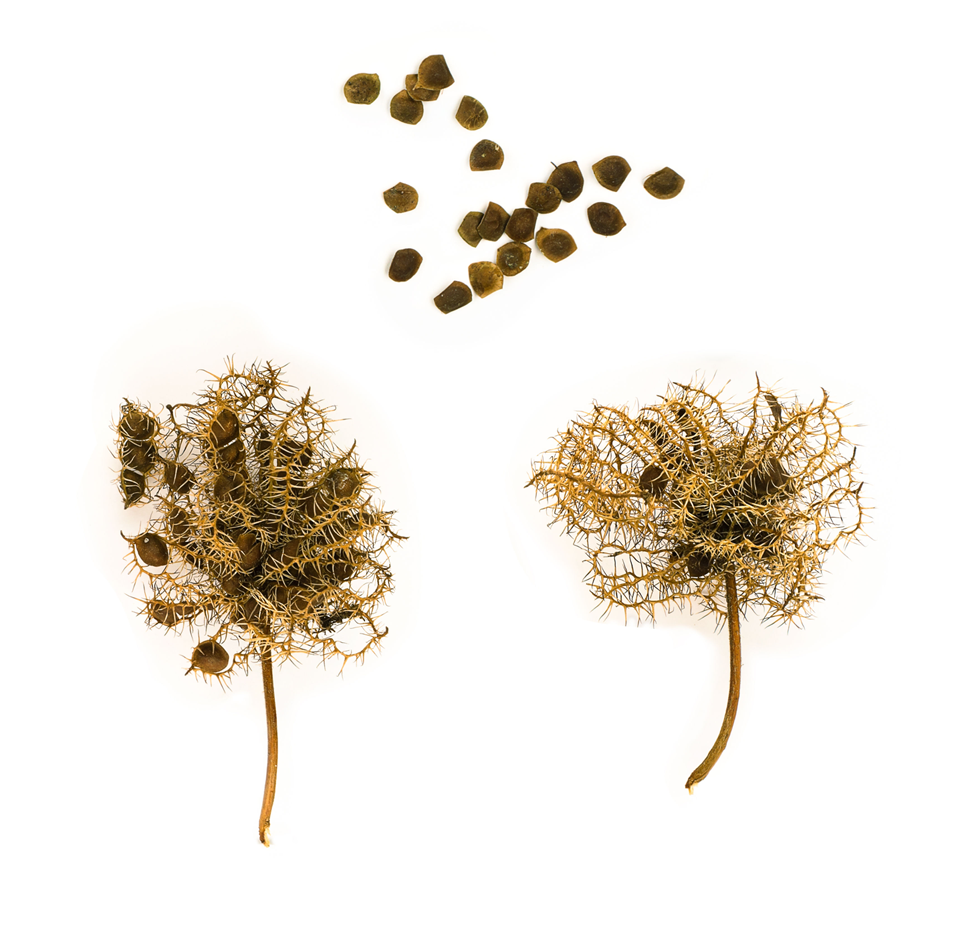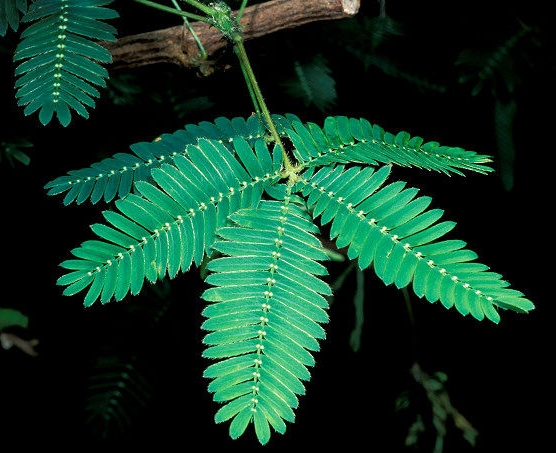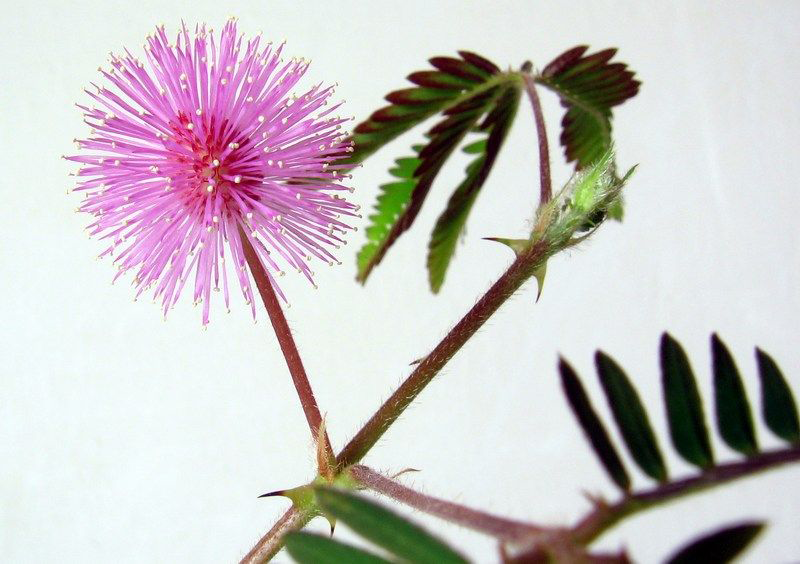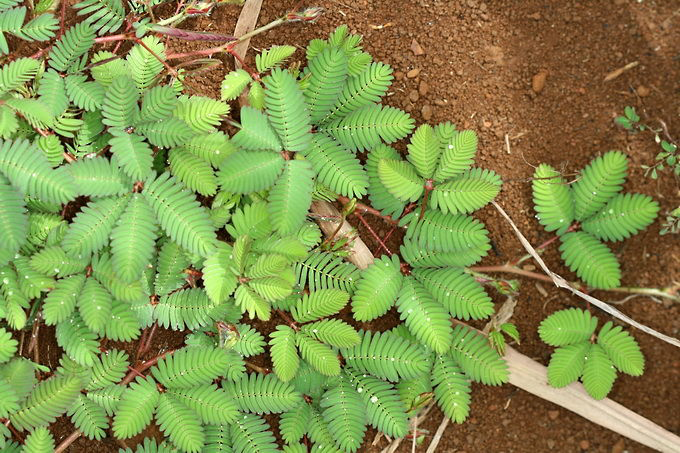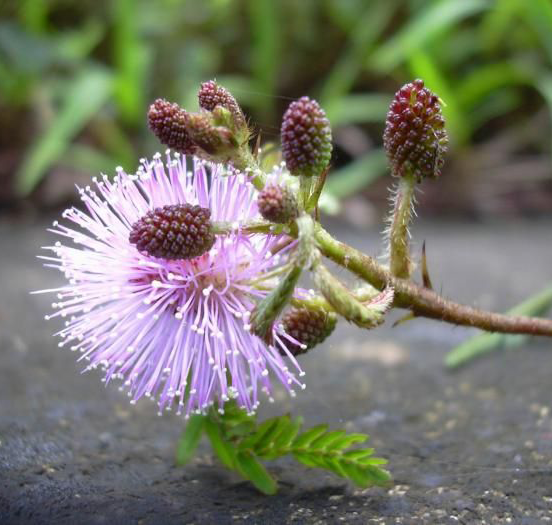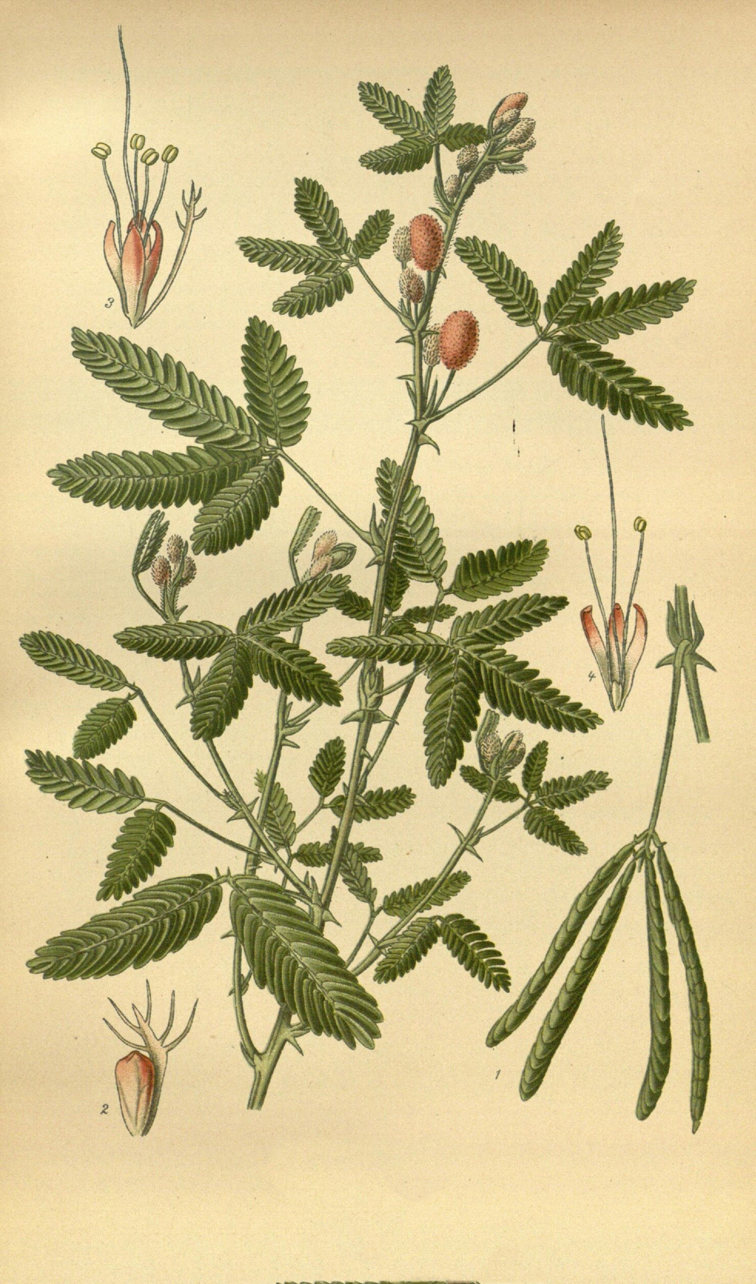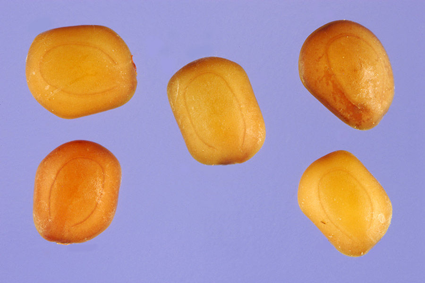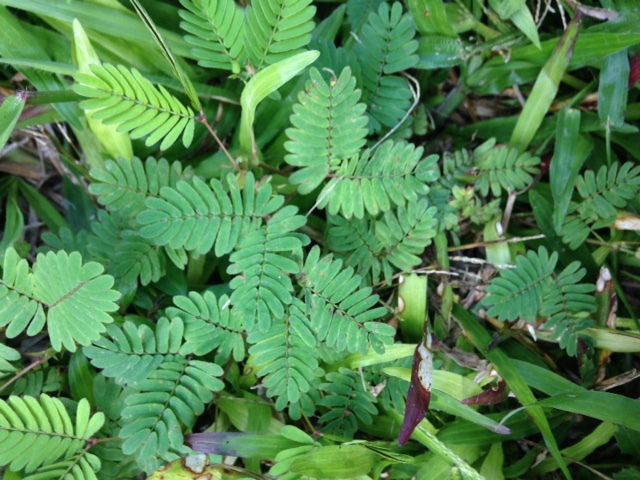| Sensitive Plant Quick Facts |
| Name: |
Sensitive Plant |
| Scientific Name: |
Mimosa pudica |
| Origin |
Central America and South America |
| Shapes |
Oblong, flattened, recurved pod about 8-20 mm long and 2-6 mm wide containing 1-5 seeds. |
| Health benefits |
Good for Arthritis, Insomnia and Diabetes |
Sensitive plant scientifically known as Mimosa pudica is a creeping annual or perennial herb which is also known as Touch-me-not, Sensitive Grass, Shame Bush, Shame Face, Shame Lady, Shame Weed, common sensitive-plant, shameplant, TickleMe Plant, Shy plant, Sleeping grass and Prayer Plant. Mimosa belongs to the taxonomic group Magnoliopsida and family Mimosaseae and is native to Central America and South America. Nowadays it can also be found in Asia in countries such as Bangladesh, Thailand, India, Indonesia, Malaysia, Philippines, Vietnam, Cambodia, Laos, Japan and Sri Lanka. Mimosa comes from the Greek word mimikos, which means ‘to mimic’ or ‘counterfeit’, through the Latin word mimus and suffix -osa, which means ‘abounding in’, and refers to the many flowers that appear to be a single flower (Parsons and Cuthbertson, 1992). The specific name pudica is from the Latin word that means ‘modest’ or ‘bashful’. It is often grown for its curiosity value mostly in undisturbed shady areas, under trees or shrubs.
Plant Description
Sensitive plant is a low-growing, much-branched, prickly, perennial shrub about 15-100 cm tall. The plant prefers disturbed and cultivated areas, such as roadsides, vacant allotments, heavily grazed pastures, crops and lawns. Roots are cylindrical, tapering, with secondary and tertiary branches, varying in length up to 2-cm thick, surface more or less rough or longitudinally wrinkled; greyish-brown to brown, cut surface of pieces pale yellow, fracture hard, woody, bark-fibrous; odor, distinct; taste, slightly astringent. Stem is woody at the base, stiff, cylindrical, reddish-brown or purple, pubescent and bear scattered prickles along the internodes. Prickles are 3-4 mm long, compressed, slightly curved, hard and very sharp
Leaves
Leaves are dark green, bipinnate and hairy. The pinnae are in two pairs (sometimes only one pair) arising close together from the tip of the petiole so the arrangement appears palmate. The petiole is about 2.5 cm long and the pinnae are 2.5-5 cm long. There are 12-50 leaflets, each 6-12 mm long, 1.5 mm wide, oblong-linear and pointed, glabrous above but with a hairy margin and lower surface. The stipules are linear-lanceolate and 7-8 mm long. Leaflets and leaves fold up rapidly when touched and also close at night.
Flower
Flower is bright purplish-pink along with four prominent stamens and occurs in globular or ovoid heads about 9 mm in diameter. The calyx is minute and the corolla is four-lobed and about 2 mm long. Peduncles, 12-25 mm long, arise from leaf axils, are densely hairy and carry prickles. The corolla is 2-2.3 mm long, and consists of four stamens. Blossoming occurs from August to October in Indian condition.
Fruits
It has bunched of 2-8 pods that are around 1.8 cm x 3-5 mm, densely thorny flocked and have prickled along their edges. Pods are oblong, flattened, recurved about 8-20 mm long and 2-6 mm wide containing 1-5 seeds. The pod is pointed at the apex, glabrous, edged with bristles and breaks into one-seeded segments which fall away from unbroken marginal sutures when mature. Seeds are light-brown, flattened, 2.5-3 mm in diameter and with a finely granular surface. Since ancient time many herbs are used for spices Sensitive plant is one among them.
History
Touch-me-not is of tropical American origin, native from southern Mexico to mid-South America and the Caribbean. It is likely that the species has been introduced to some of the extreme parts of the New World range. Also, some of the varieties have been introduced beyond their pre-Columbian distributions, e.g. var. tetrandra is mainly found in Colombia and Venezuela and its presence in southeast Brazil probably results from introductions. The var. hispida may have arisen from south-western Mexico before being introduced elsewhere in the neotropics. It has been widely introduced and has become a serious weed throughout the world’s tropical regions.
Types
Hutchinson et al. note that three varieties are recognized, two of which occur in West Africa: var. hispida with stipules 8-14 mm long and bracteoles exceeding the grey-puberulous corolla buds, and var. unijuga with stipules 4-8 mm long and bracteoles shorter than the glabrous flower buds. USDA-NRCS (2008) indicates that var. unijuga also occurs in Hawaii, while the form occurring in continental USA and in Puerto Rico is var. pudica.
Health benefits of Sensitive plant
Sensitive plant besides being a fun intriguing element of nature is also filled with a lot of health benefits. The list below gives you the health benefits this plant boasts about and how you can include them in times of need.
1. For Joint Pain or Arthritis
This plant also helps cure joint pain. For this, you have to make a paste from the leaves of this plant and apply it on your joints. Leave it for the night and then wash it the next morning. By doing this daily you will notice the difference, as the swelling and pain from the joints will start to diminish.
2. Treating Insomnia/Sleeplessness
To deal with Insomnia or sleeplessness take leaves of this plant (5gm) and crush them to make a paste. Boil this paste in hot water and strain. Take this during nighttime and within 15-20 days you will see the results.
3. For Treating Asthma
Prepare the juice of this plant (15ml) and drink it twice a day. This will help in treating asthma.
4. To Cure Gum Problems and Toothache
You can gargle with the decoction made from the roots of this plant to maintain good oral hygiene and cure toothache.
5. To Cure Itching
To get rid of the itchy skin, just make a paste from the root of this plant and apply it to the affected area. Or make a paste by extracting the juice of this plant and add Sesame oil. The consistency of the paste should be such that the juice of this plant makes up ¾ of the paste. Apply this over the affected area.
6. Fights Hair Loss
Mimosa Pudica plant helps in the growth of new hair cells and helps to control hair loss and baldness. It is recommended to use herbal shampoos containing the extracts of this plant.
7. Treating Fractures
This plant also helps to treat fractures of the bone. Simply make a paste of the leaves and apply on the affected area.
8. For Minor Cuts and Wounds
Juice extracted by crushing a few leaves of this plant and applied on the wound will work wonders. This plant has healing properties through which the pain will diminish easily.
9. For Treating Diabetes
Low blood sugar level is another benefit gained by drinking the juice of this plant. Drink 30ml juice of this plant thoroughly morning and evening. Within 7-10 days you will notice the difference in your blood sugar levels.
10. For Treating High Blood Pressure
Take leaves of this plant and crush them to extract the juice. Consume 15 ml twice a day and say goodbye to your high blood pressure problems.
11. For Treating Premature Ejaculation
Take the seeds of this plant and mix with equal quantities of sugar. At night take 2 teaspoons of it with warm milk.
12. For Treatment of Glandular Swelling and Hydrocele
Prepare a juice from the leaves of this plant and apply on the affected area for treatment of glandular swelling and hydrocele. By doing this the burning sensation and swelling will subside.
13. To Uplift Sagging Breast
Instead of going for expensive treatments and surgeries, simply prepare a paste of the sensitive plant and Ashwagandha roots and apply this paste on the breasts to uplift them.
14. For Treating Stomach Ache and Intestinal Worms
For treating stomach ache and the problem of intestinal worms all you have to do is: Make a paste from the leaves of this plant. For 3-4 days take this paste once a day mixed with honey.
15. For Treating Snake Bites
Sensitive plant is proven to fight the venom of snakes as dangerous as the cobra. In a case of such emergencies prepare a decoction of its roots (10gm) in 400ml of water and drink it twice a day.
16. For Treating Insect Bites
In a case of insect bites grind the leaves and stem of this plant and apply on the affected area. Do this remedy twice a day.
https://www.youtube.com/watch?v=AxuSYCmPbQw
Ayurvedic health benefits of Sensitive plant
- Helps in Piles: Make the powder of its leaves and give 1 teaspoon of powder with milk twice or thrice a day. Or, give 1 teaspoon powder of its roots and leaves with milk thrice a day.
- Cough: Take its root and tie it on the neck. It has a very positive effect on cold and cough types of problems.
- Bleeding diarrhea: Give 3 gm. powder of its root with curd. It gives an immediate relief in bleeding diarrhea. Or, prepare decoction of its roots in a glass of water till it remains 1/4th and give this to the patient twice a day.
- Strengthening Breasts: Grind the root along with the root of Winter cherry. Apply the paste on the loosened breasts. In few uses only, it makes your breasts strong, stiff and healthy.
- Jaundice: Extract the juice from its leaves. Give this juice to the patient regularly. Within 7 days, it will cure the fever and within 2 weeks it will cure Jaundice types of problems.
- Multinodular tuberculosis: Extract the juice from its leaves. Give 40 mg of the juice regularly. It cures multinodular tuberculosis.
- Calculus: Make a thick decoction of its roots. Give this decoction to the patients thrice a day. It dissolves the stones which get released through the urine.
- Excessive urination: Apply the paste of its leaves on the lower abdominal area. It is a good cure for excessive urination.
- Indigestion: In case of Indigestion or acidity, give 30 mg juice of its leaves. It works as a natural antacid and cures the disorder.
- Swelling: Make leaves paste. Apply on the affected part once a day.
- Wounds: Make a paste of leaves. Apply on the affected parts.
- Insect Bites: Grind the leaves and stem together. Apply paste on the affected parts twice a day.
- Premature Ejaculation: Powder some seeds of sensitive plant. Add equal amount of crushed Sugar. Take one teaspoon with milk every morning.
- Kidney Pain: Warm few leaves of Sensitive plant. Use them as poultice over painful areas.
- Itching: Mix plant juice of Sensitive plant with sesame oil in 4:1 ratio. Apply on the inflamed skin.
- Skin Diseases: Crush whole plant of Sensitive plant. Make its decoction. Use it to wash infected skin.
- Breast Cancer: Take dried roots of Withania Somnifera and Mimiso Pudica. Make a paste of its roots. Apply the paste on your breast once a day.
Traditional uses and benefits of Sensitive plant
- Plant is used as a folk anti-helminthic medicine, during childbirth and for infertility.
- Stems, leaves and roots are used to treat insomnia, spasms and convulsions in Vanuatu.
- It is used as a medicinal plant in Hong Kong.
- Grind leaves, flowers and the roots to a paste and apply it on the affected area to treat inflammation and other skin diseases.
- Plant is effective against cobra venom and also the headaches from migraines.
- Roots used as diuretic; also used for dysentery and dysmenorrhea in Philippines.
- Entire plant in decoction is used as alterant and antiasthmatic.
- Root is considered aphrodisiac, and is used for bladder gravel and similar urinary complaints.
- Decoction or infusion of leaves is used in asthma.
- The plant is also used for hypertension, menorrhagia, glandular swelling, sore throat and hoarseness.
- Powdered seeds can be applied to wounds and sores.
- Bruised leaves are applied to bruises.
- Decoction of leaves is used for diabetes.
- Powdered roots and leaves are taken with milk for piles and fistula.
- Juice is applied externally to fistulous sores.
- It is used for treatment of anxiety and depression in China.
- It is used for birth control in India.
- Roots are used as vomitive in the Antiles, Guiana, and La Reunion.
- Seeds are used as emetic in Indo-China.
- Seeds are used for sore throat in Punjab and Cashmere.
- Pastes of leaves are applied to hydrocoeles and glandular swellings in Concan.
- Infusion of leaves is used for dysentery.
- Leaves are used for hydrocoele, hemorrhoids, fistula, scrofula, conjunctivitis, wounds and hemorrhages.
- Whole plants are used for bladder calculi; externally, for edema, rheumatism, myalgia and uterine tumors.
- Whole plant are crushed and used for itching and scabies.
- Root decoction drunk as tonic; pounded leaves applied as poultice on body swellings in Malaysia.
Dose: Mimosa pudica
Liquid: Dose about 3 to 6 ml of 1:2 mimosa liquid extract daily is advisable
Capsule: 1 tablet 3 times daily with meals is advisable.
However capsule and liquid extract formulations are proprietary herbal blends and are available in several strengths beside this powder, teas are also available.
Other Facts
- Each plant can produce up to 700 seeds in a year.
- It has also been planted to control soil erosion.
- Pudica is an important source of pollen grains for Italian honeybees and other bees in Guadeloupe, Trinidad and Tobago, Cuba, India, Malaysia and the Philippines.
Precautions
- It should not be consumed by pregnant and lactating women.
- If taken in high quantities it can prove fatal.
- Avoid using it if you suffer from constipation or hypomenorrhea.
References:
http://www.theplantlist.org/tpl1.1/record/ild-118
https://plants.usda.gov/core/profile?symbol=MIPU8
https://www.itis.gov/servlet/SingleRpt/SingleRpt?search_topic=TSN&search_value=26790#null
http://www.hear.org/pier/species/mimosa_pudica.htm
https://npgsweb.ars-grin.gov/gringlobal/taxonomydetail.aspx?id=24405
http://davesgarden.com/guides/pf/go/55641/
http://www.cabi.org/isc/datasheet/34202
https://en.wikipedia.org/wiki/Mimosa_pudica
https://www.business.qld.gov.au/industries/farms-fishing-forestry/agriculture/land-management/health-pests-weeds-diseases/weeds-diseases/invasive-plants/other/common-sensitive-plant
http://www.stuartxchange.org/Makahiya.html
Comments
comments


